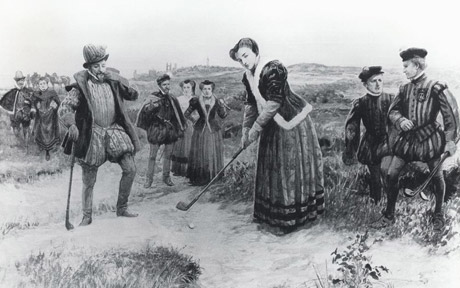One of the rumours that thrived at the Tudor court after 1536 was that the doomed Queen Anne Boleyn had had six fingers. To us that would be a deformity but nothing serious; however, at the time it was considered a sign of witchcraft. Since Anne had been convicted of witchcraft it was all too easy to make something out of an otherwise innocent physical flaw. Like every other rumour this needs to be checked into.
Nicholas Sander (or Saunders) is one of those names you cannot avoid when investigating this case. He wrote the book Schismatis Anglicani (The Rise and Growth of the Anglican Schism) in which he delivers a description of Anne Boleyn's appearance:
She had a projecting tooth under the upper lip, and on her right hand, six fingers
 |
This well-known portrait of
Anne certainly shows no
extra finger - but then again
it wouldn't |
The source has to be considered. Nicholas Sanders is estimated to have been born around 1530 - six years before Anne's execution. Since he was only a child and not even a child of the nobility at that it is extremely unlikely that he ever actually saw the infamous Queen herself. Also, he was a Roman Catholic and as such it was in his interest to discredit one of the so far strongest faces of Protestantism which Anne Boleyn certainly was. Besides, Sander did not write this book until decades after Anne's death - that leaves him a lot of time to be influenced by resentful Catholics.
One other person who would certainly have jumped on the opportunity to trash Anne's name was the Spanish ambassador Eustace Chapuys. But he never mentions anything about either the Queen's fingers or her nails. It is hard to believe that a man who mainly referred to Anne Boleyn as "the concubine" or down-right "the whore" would miss out on the opportunity of using an extra finger to call her a witch.
George Wyatt (grandson of the Thomas Wyatt who adored Anne) wrote in 1605:
"There was found, indeed, upon the side of her nail upon one of her fingers, some little show of a nail, which yet was so small, by the report of those who have seen her, as the work-master seemed to leave it an occasion of greater grace to her hand, which, with the tip of one of her other fingers, might be and was usually by her hidden without any blemish to it"
Now, George Wyatt's book is mainly in defence of Anne and not meant as yet another attack on the long-gone Queen. This leads us to the more likely conclusion that there may have been a hint of another nail of one of her fingers but that is still far from a new finger. And having grown up in the aftermath of Anne's reign George is most likely to have heard the nasty rumours which must have influenced him despite his good-look of Anne.
And let's not forget the wonderful thing that is pure logic. Henry VIII was .. well, a vain man and it seems very strange that he should become so attached to a woman who had a such an obvious deformity. He certainly would not have married her! Actually it is doubtful that Anne would even had been a lady-in-waiting to the Queen with a sixth finger. After all, it was a dangerous time to have such imperfections.
Finally during the excavations within the Tower of London in 1876, Dr. Mouat found the body of a woman "
between twenty-five and thirty years of age" who is widely believed to have been Anne Boleyn herself. If this true and that it actually is Anne herself then there is nothing to prove that an extra finger troubled Anne. According to Dr. Mouat's report the body had "
well-shaped hands and feet" - no trace of a deformity.











